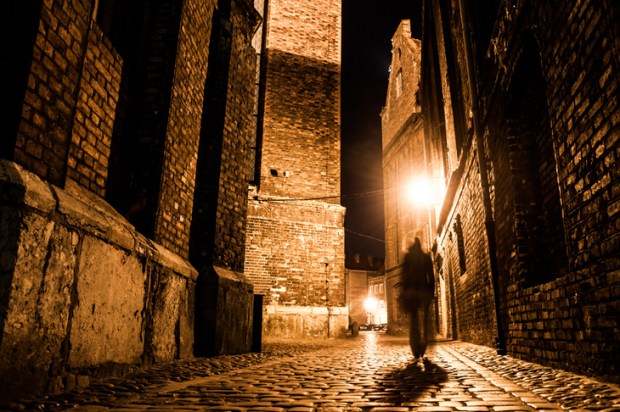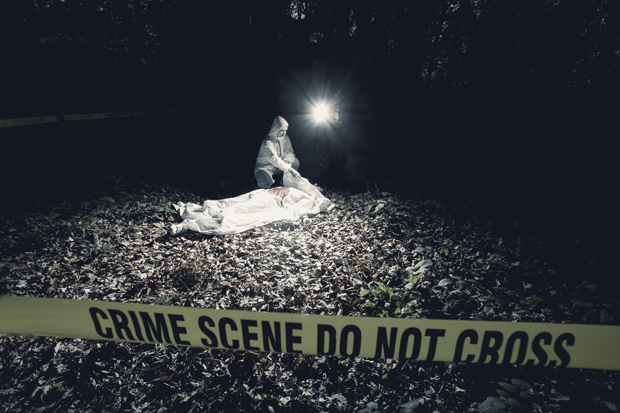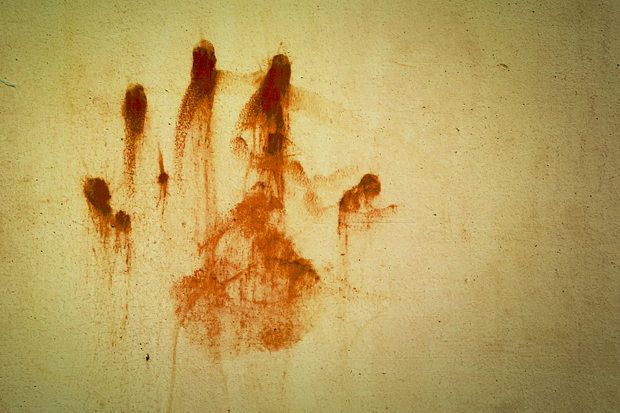There are two people in a prison cell: Frank and Hal. One of them is a member of a spy ring planning a terrorist act; the other is a police agent planted there to befriend the spy, and gather information on the terrorist cell. But the reader doesn’t know which is the cop, and which the criminal. This is the brilliant conundrum at the heart of Frédéric Dard’s The Wicked Go to Hell (Pushkin Vertigo, £7.99). The relationship between the two men moves from mutual loathing, suspicion and violence, to a begrudging partnership, to friendship, then to suspicion once more. Even after they escape prison together and go on the run, the fragile relationship continues: ‘Hatred like ours… is stronger than just affection, it goes much deeper!’
This French novella, first published in 1956, is a beguiling if slightly awkward mix of tragedy and farce, gunplay and broad humour. And the fact that the supposed good guys are happy to use physical torture only adds to the ambiguous moral nature of the plot. It’s a game of cat and mouse where cat and mouse are both wearing masks: claustrophobic, paranoid in the extreme, and very entertaining. A tough-guy version of Kafka.
Thomas Mullen’s Darktown (Little, Brown, £14.99) is influenced by true events. In 1948 an African-American police force was created in Atlanta, Georgia. Consisting of just eight men, the force had limited powers; the officers couldn’t make arrests and patrolled only the poor black neighbourhoods. The plot follows two of these officers, Boggs and Smith, as they track down the murderer of a young black woman. This is the deep South only 85 years after the end of slavery, and everybody seems to be against the duo: racist cops, corrupt politicians, even their own boss.
Mullen writes very much from today’s perspective, with rather too much hindsight, I feel. All the really nasty villains are white, a fact that disallows any real outpouring of human desire on the part of other ethnic groups. And then we have Officer Rakestraw, the novel’s main focus of the troubled, white, liberal psyche. A lot of the story’s moral struggle rests with him, and I’m not exactly sure he bears the weight of it that well. The book is dedicated to the memory of the original Darktown eight: a lovely touch. But apart from the historical context, this is a somewhat run-of-the-mill police procedural. It’s a shame. With a subtler, braver hand, it could’ve been a very important novel.
Many of the poor people in Darktown dream of escaping to Chicago. Ray Celestin’s Dead Man’s Blues (Mantle, £12.99) takes up that subject, tracking the lives of newcomers in the big city. This is the sequel to the prizewinning The Axeman’s Jazz, with some of the same characters returning, including the wonderful Ida Davis, a black woman working for Pinkerton’s detective agency. Her search for a missing heiress intercuts with two other stories: a group of city leaders poisoned in a fancy hotel, and a gangster found dead in an alleyway. This is Chicago in 1928, with Al Capone making his brutal presence felt in daily battle against rival criminal gangs. Under the constant threat of bloodshed, the three stories gradually weave together into an intriguing portrait of a time and a place.
Dead Man’s Blues is a better read than Darktown: the historical detail is captivating, and the author’s own beliefs make less of an appearance. The young Louis Armstrong turns up, and his powerful, searching, explosive jazz pulses through the pages, a soundtrack to Ida’s increasingly dangerous investigation. Yet the city has a surprise for her: between the outbreaks of violence a kind of love can grow. No matter how poor we are, or how difficult our lives, we are not alone.
Back to the real thing, a voice rising naturally from its period. Not that there’s anything ‘real’ as such in Cameron McCabe’s 1937 metafictional murder mystery, The Face on the Cutting-Room Floor (Picador Classic, £8.99). The games begin from the off when we realise that the main character shares the author’s name. McCabe is a film editor, given the job of cutting actress Estella Lamare’s face and body from every scene of a current production. When, a short time later, Estella herself is found dead,
McCabe’s troubles begin. He takes on the role of detective, trying to uncover the killer’s identity, only to be arrested himself on suspicion of the murder. This is one of the most complex and confusing puzzles in crime writing history. Innocent people make willing confessions; a film of Estella’s death is played back in conflicting versions; there are jump-cuts in the narrative as though McCabe has applied his editor’s blade to the book itself. Irritations and delights abound, often on the very same page.
Romantic beyond measure, especially about nightlife in London, the novel is written in a style that no present day author could hope to replicate. It’s a bit like Somerset Maugham meeting James Joyce in a dark alleyway in Soho and one of them ending up dead, and the reader not quite able to work out which one’s the victim, and which the murderer. Even the true identity of its author Cameron McCabe is part of the mystery. After all these years, The Face on the Cutting-Room Floor remains a one-off, and a seriously fun document about the nature of writing. And killing people.
The post Recent crime fiction appeared first on The Spectator.
Got something to add? Join the discussion and comment below.
Get 10 issues for just $10
Subscribe to The Spectator Australia today for the next 10 magazine issues, plus full online access, for just $10.
You might disagree with half of it, but you’ll enjoy reading all of it. Try your first month for free, then just $2 a week for the remainder of your first year.














Comments
Don't miss out
Join the conversation with other Spectator Australia readers. Subscribe to leave a comment.
SUBSCRIBEAlready a subscriber? Log in